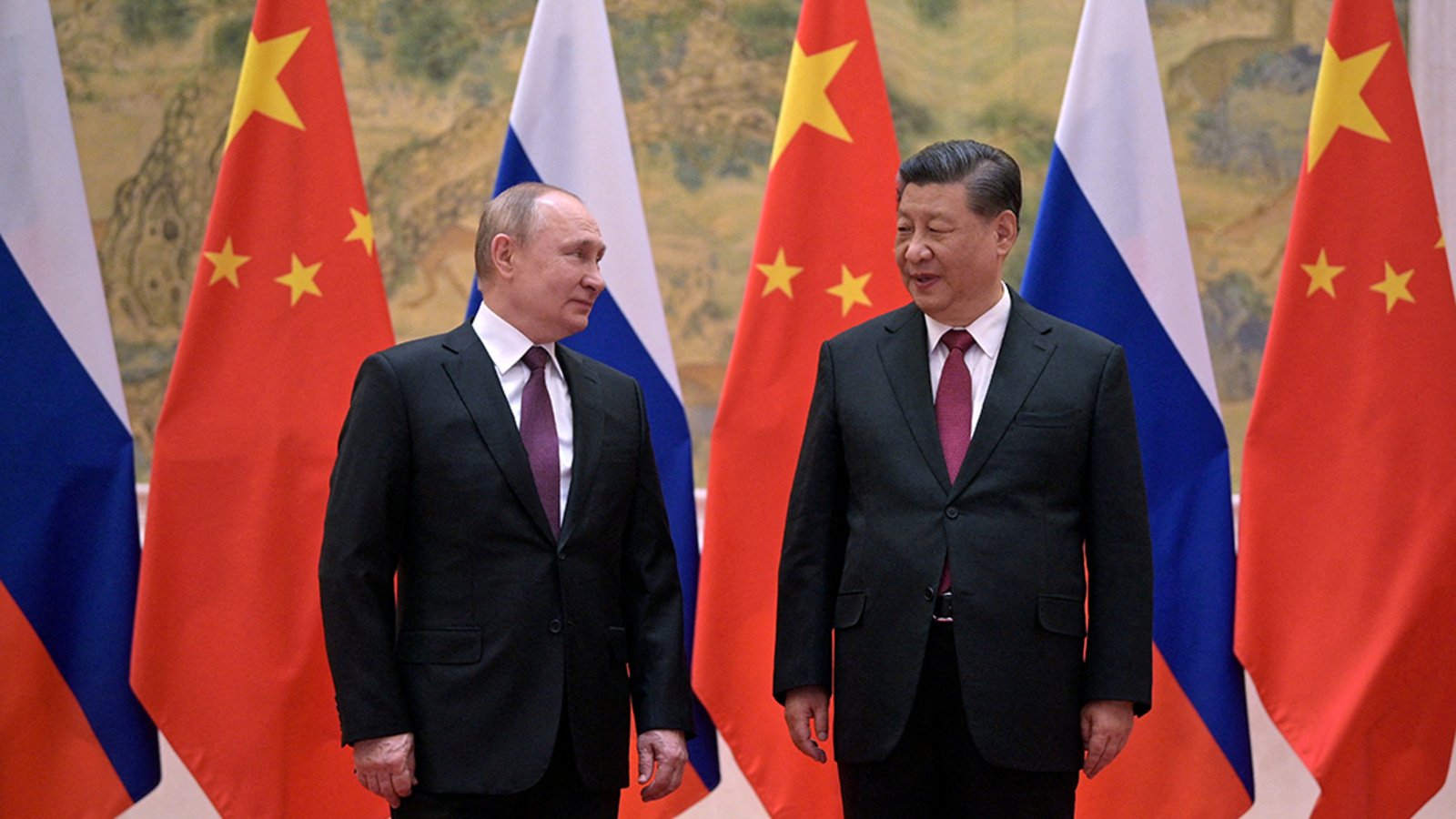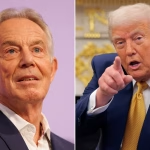- Historical Context of the Russia-China Partnership
- Why Russia and China Are Pushing to Reshape the Global Order
- Military Cooperation Between Russia and China
- Economic Collaboration and Alternatives to Western Systems
- Diplomatic Coordination on the Global Stage
- The U.S. and Western Response
- Risks of a Russia-China Alliance for Global Stability
- Perspectives from Experts
- Global Reactions Beyond the U.S.
- Lessons for the Future of Global Order
- FAQs
- Conclusion
The international system is undergoing one of its most dramatic shifts since the end of the Cold War. For decades, the United States and its Western allies have dominated global political, economic, and security institutions. Yet in recent years, Russia and China have increasingly joined forces to challenge this Western-led order, advancing their own vision of multipolarity.
From energy partnerships to military cooperation and the creation of alternative financial systems, the two powers are intensifying efforts to weaken U.S. influence and reshape the architecture of global power. This development not only redefines alliances but also raises fundamental questions about the future of international stability, security, and prosperity.
Historical Context of the Russia-China Partnership
Early Relations
Russia and China have a long, complicated history of rivalry and cooperation. During the Cold War, they were both communist powers but often clashed ideologically and geopolitically. The Sino-Soviet split in the 1960s left decades of mistrust between Moscow and Beijing.
Post-Cold War Reset
The collapse of the Soviet Union in 1991 opened the door for a reset. By the early 2000s, both countries began finding common ground in resisting U.S. influence. Their partnership strengthened as they shared grievances over NATO expansion, U.S. military interventions, and Western dominance in global institutions like the IMF and World Bank.
Why Russia and China Are Pushing to Reshape the Global Order
Shared Strategic Interests
Both Moscow and Beijing believe the U.S.-led order undermines their sovereignty and security. They see Western sanctions, military alliances, and democratic promotion as tools of containment.
Opposition to Western Dominance
Russia views NATO as a direct threat, while China sees U.S. alliances in Asia — like those with Japan, South Korea, and the Philippines — as attempts to contain its rise. Together, they argue for a multipolar world order where no single power dominates.
Economic Incentives
China’s Belt and Road Initiative (BRI) and Russia’s energy exports form the backbone of their economic outreach. By aligning their strategies, they aim to reduce dependency on Western markets and institutions.
Military Cooperation Between Russia and China
Joint Exercises
In recent years, Russia and China have conducted unprecedented joint military drills — from the South China Sea to the Arctic. These exercises are not just symbolic but signal growing interoperability between their forces.
Technology Transfers
Russia has provided China with advanced fighter jets and missile systems, while China’s growing tech sector complements Russia’s defense needs. Together, they are challenging Western dominance in defense innovation.
Strategic Messaging
Every joint military operation sends a clear message: Russia and China are prepared to coordinate their military power in ways that complicate U.S. and NATO planning.
Economic Collaboration and Alternatives to Western Systems
Energy Deals
Russia is one of the world’s largest energy exporters, while China is the largest energy consumer. Their partnerships — such as the Power of Siberia pipeline — symbolize deepening economic interdependence.
De-dollarization Efforts
Both nations have pushed to reduce reliance on the U.S. dollar in trade. Bilateral deals increasingly use the Chinese yuan or Russian ruble, weakening the dollar’s dominance in global markets.
BRICS and the New Development Bank
Through institutions like BRICS and the Shanghai Cooperation Organization (SCO), Russia and China promote alternative frameworks to Western-led financial structures. The BRICS New Development Bank offers loans without the political strings often attached by the IMF or World Bank.
Diplomatic Coordination on the Global Stage
At the United Nations
Russia and China often align their votes at the UN Security Council, blocking resolutions that target their interests or those of their allies — such as on Syria, North Korea, and Iran.
Support for Authoritarian Allies
Both countries extend support to governments opposed to Western influence, from Venezuela to Myanmar. This helps them build a network of states skeptical of U.S. leadership.
Narrative Building
Chinese and Russian media outlets collaborate to amplify narratives portraying the U.S. as destabilizing and portraying themselves as defenders of sovereignty and fairness in global governance.
The U.S. and Western Response
Sanctions and Containment
The U.S. has imposed sweeping sanctions on Russia over Ukraine and on China over trade practices and human rights abuses. Yet sanctions have also pushed Moscow and Beijing closer together.
Strengthening Alliances
NATO has expanded cooperation in Eastern Europe, while the U.S. has bolstered defense ties in the Indo-Pacific through the Quad (U.S., India, Japan, Australia) and AUKUS (Australia, U.K., U.S.).
Technological Competition
The U.S. is racing to limit China’s access to cutting-edge technology like semiconductors while investing in its own supply chains. Similarly, Western states are seeking to diversify energy away from Russia.
Risks of a Russia-China Alliance for Global Stability
Erosion of International Norms
Their cooperation challenges the rules-based order established after World War II. If successful, weaker international institutions could lead to more instability.
Military Escalation
Joint drills and strategic coordination raise fears of simultaneous crises — for example, Russia escalating in Europe while China acts in the Taiwan Strait.
Economic Fragmentation
The rise of alternative systems could split the global economy into competing blocs, reducing efficiency and increasing financial risks worldwide.
Perspectives from Experts
On Geopolitics
Analyst Richard Haass notes, “What we are witnessing is not just great power competition but an attempt to fundamentally alter the rules of international engagement.”
On Economics
IMF reports suggest that a fractured financial system could reduce global GDP by several percentage points, affecting both developed and developing nations.
On Security
Military experts warn that Russia-China coordination complicates deterrence strategies, as the U.S. and allies would face challenges in multiple theaters simultaneously.
Global Reactions Beyond the U.S.
Europe
European nations are increasingly cautious of China, especially after its ambiguous stance on Russia’s invasion of Ukraine. The EU has shifted toward a strategy of “de-risking” rather than “decoupling.”
Global South
Countries in Africa, Latin America, and Asia often welcome Russian and Chinese investments as alternatives to Western aid, even if they come with their own dependencies.
India
India, while part of BRICS, remains wary of China due to border disputes. It plays a balancing role between Western powers and emerging blocs.
Lessons for the Future of Global Order
- Multipolarity is rising — U.S. unipolar dominance is fading, and global power is more distributed.
- Alliances matter — Both the West and the Russia-China bloc are competing to win partners globally.
- Economics drive geopolitics — Energy, trade, and financial systems are as important as military strength.
- Uncertainty is the new norm — The coming decades will likely be defined by shifting alignments and contested rules.
FAQs
Why are Russia and China aligning more closely now?
They share opposition to U.S. influence, face Western sanctions, and see strategic benefit in combining military, economic, and diplomatic power.
What does their partnership mean for the U.S.?
It creates a two-front challenge: deterring Russia in Europe while containing China in Asia, stretching U.S. resources and alliances.
Are Russia and China creating an alternative world order?
Yes, through initiatives like BRICS, de-dollarization, and regional security frameworks, they are building structures outside Western control.
Could their alliance last long-term?
While strong now, historical mistrust and competing interests could limit the depth of cooperation in the future.
How does this affect smaller nations?
Developing countries may benefit from alternative investment options but risk being caught between competing great power blocs.
Conclusion
The intensifying partnership between Russia and China is one of the defining trends of 21st-century geopolitics. Together, they are pushing to reshape the global power order, challenging Western dominance in military, economic, and diplomatic spheres.
While their alliance has strengthened in the face of U.S. pressure, it also brings risks — from military escalation to economic fragmentation. The world is moving toward an era where power is more contested, alliances more critical, and the rules of international engagement less certain.
For the United States and its allies, the challenge lies in adapting to this new reality without triggering conflict. For Russia and China, the test will be whether their cooperation can endure and truly create a multipolar world.
The outcome of this struggle will shape not just international relations, but the very structure of global power for generations to come.








